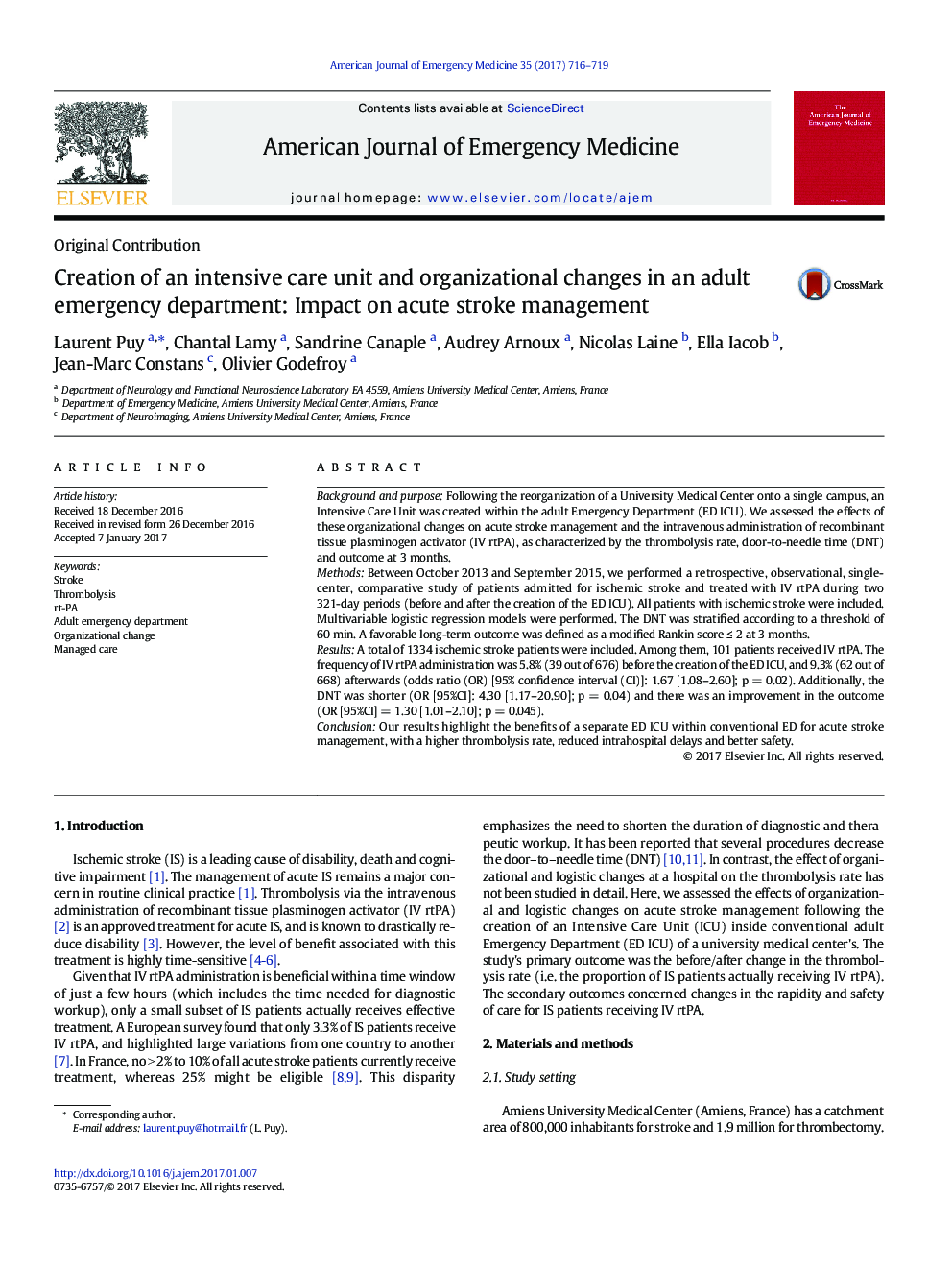| Article ID | Journal | Published Year | Pages | File Type |
|---|---|---|---|---|
| 5650630 | The American Journal of Emergency Medicine | 2017 | 4 Pages |
Background and purposeFollowing the reorganization of a University Medical Center onto a single campus, an Intensive Care Unit was created within the adult Emergency Department (ED ICU). We assessed the effects of these organizational changes on acute stroke management and the intravenous administration of recombinant tissue plasminogen activator (IV rtPA), as characterized by the thrombolysis rate, door-to-needle time (DNT) and outcome at 3 months.MethodsBetween October 2013 and September 2015, we performed a retrospective, observational, single-center, comparative study of patients admitted for ischemic stroke and treated with IV rtPA during two 321-day periods (before and after the creation of the ED ICU). All patients with ischemic stroke were included. Multivariable logistic regression models were performed. The DNT was stratified according to a threshold of 60 min. A favorable long-term outcome was defined as a modified Rankin score â¤Â 2 at 3 months.ResultsA total of 1334 ischemic stroke patients were included. Among them, 101 patients received IV rtPA. The frequency of IV rtPA administration was 5.8% (39 out of 676) before the creation of the ED ICU, and 9.3% (62 out of 668) afterwards (odds ratio (OR) [95% confidence interval (CI)]: 1.67 [1.08-2.60]; p = 0.02). Additionally, the DNT was shorter (OR [95%CI]: 4.30 [1.17-20.90]; p = 0.04) and there was an improvement in the outcome (OR [95%CI] = 1.30 [1.01-2.10]; p = 0.045).ConclusionOur results highlight the benefits of a separate ED ICU within conventional ED for acute stroke management, with a higher thrombolysis rate, reduced intrahospital delays and better safety.
